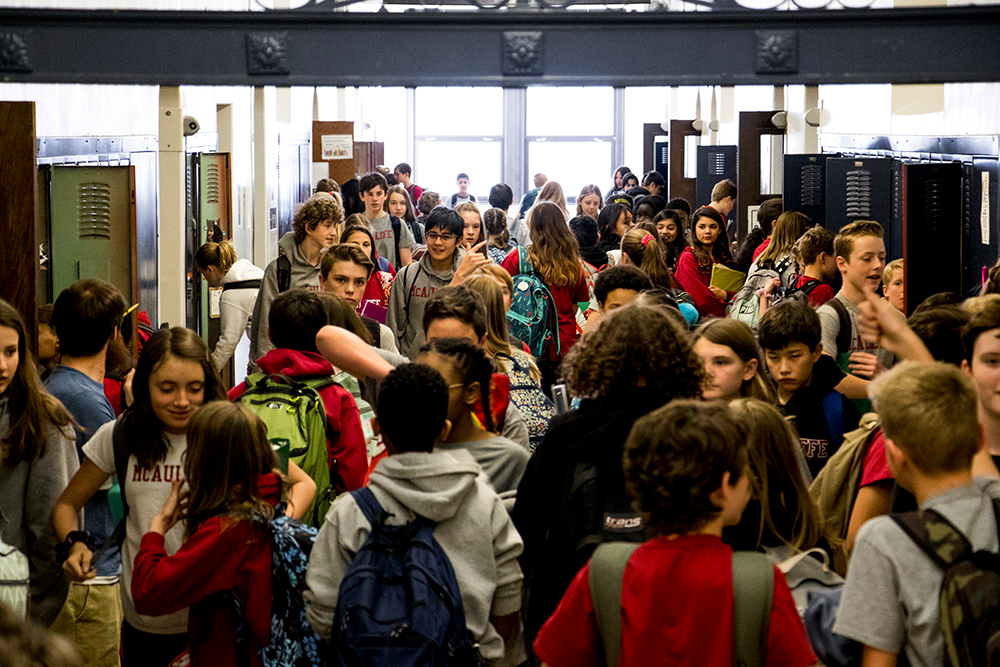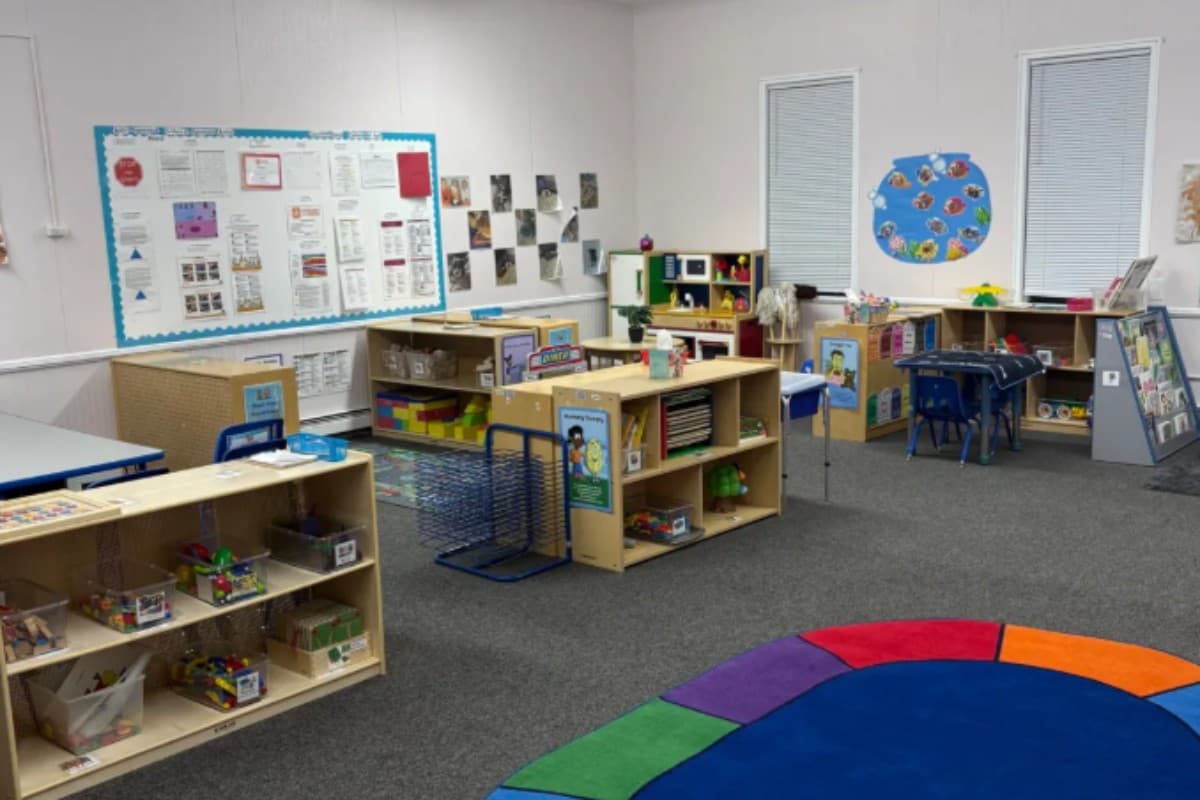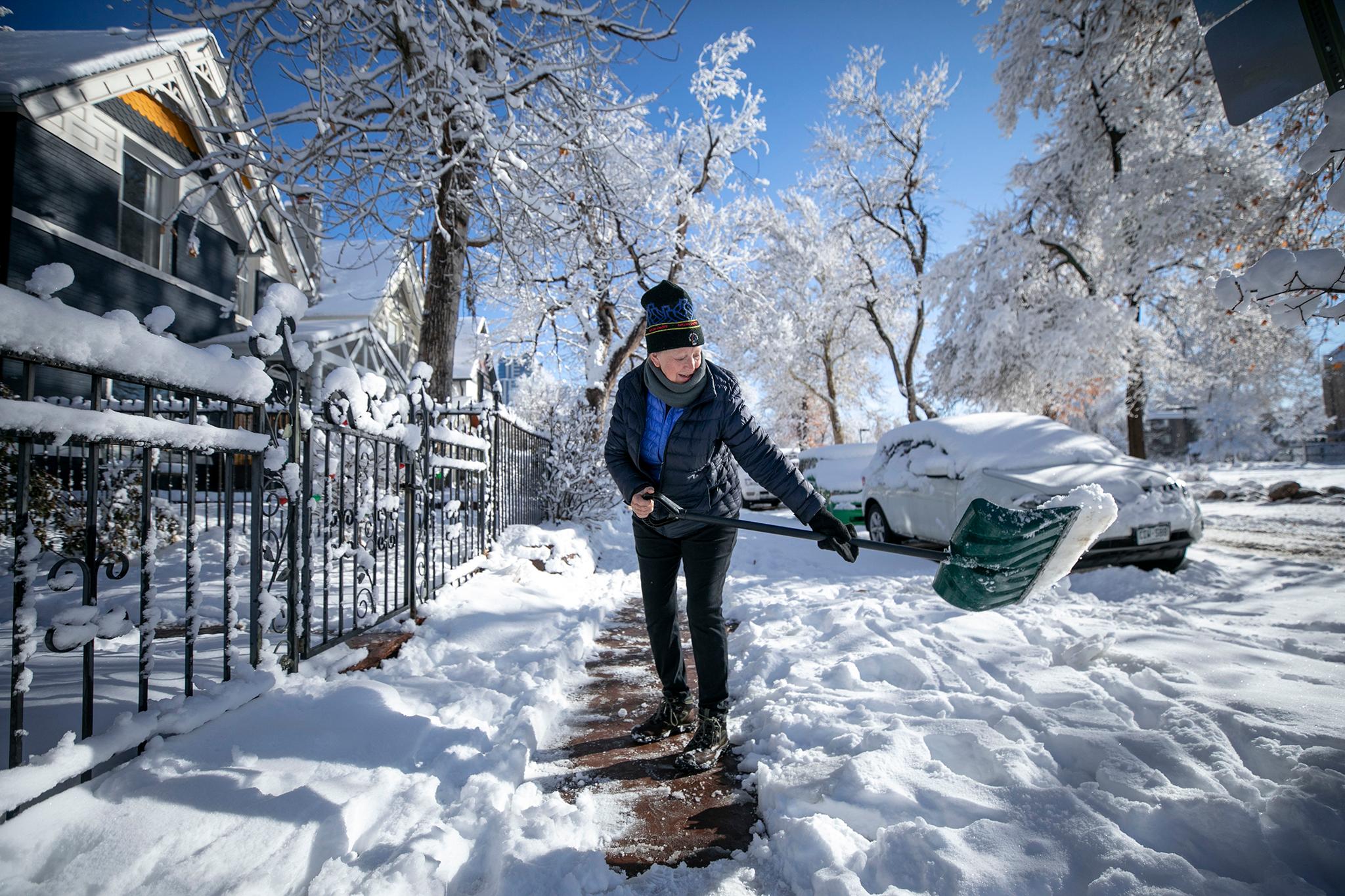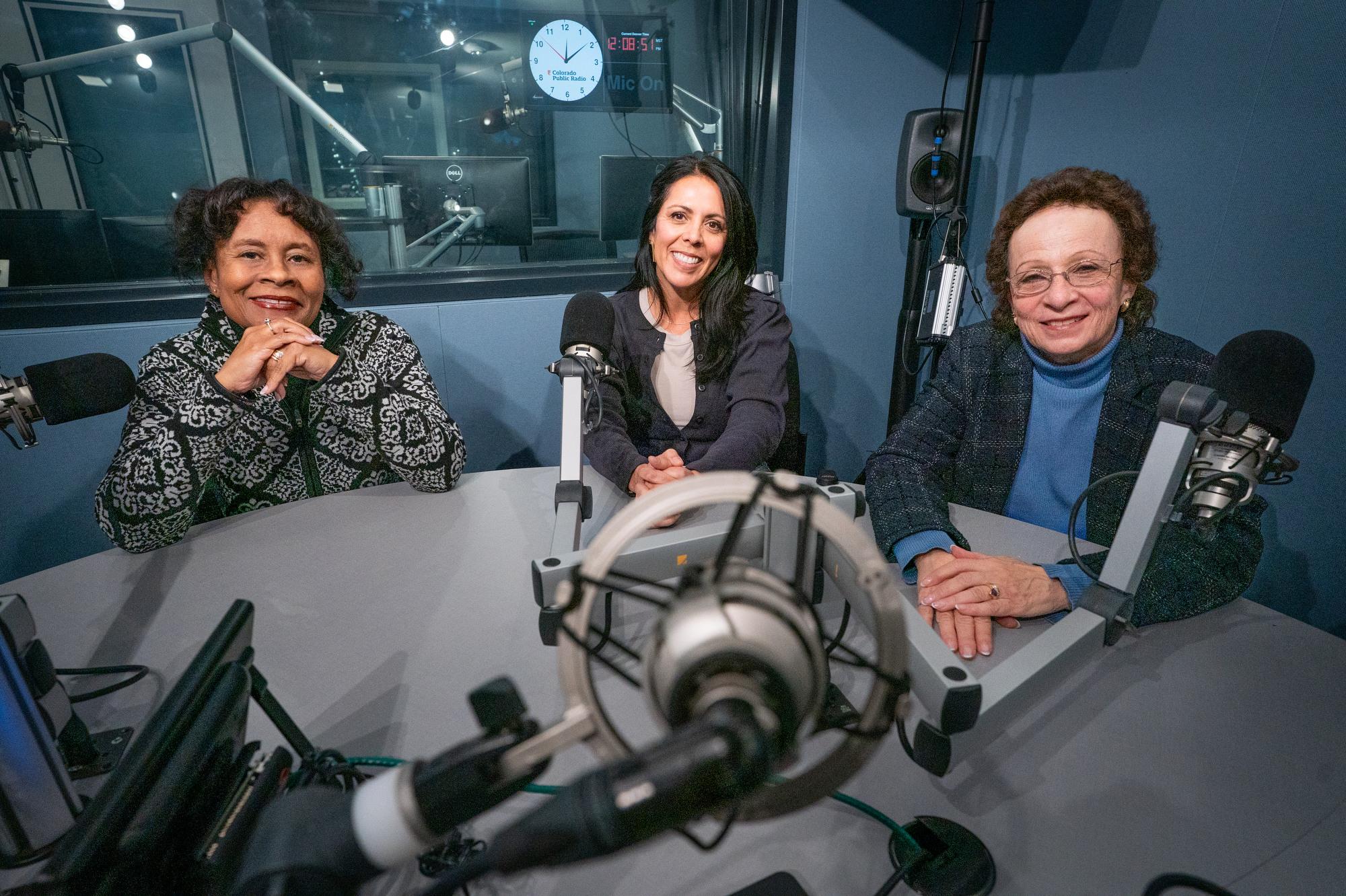
More than 20 school districts are on the ballot this November asking voters for $6.4 billion in tax measures. The vast majority of that ($6.2 billion) is for bonds in large districts that won’t raise taxes. The totals are still being finalized.
But first, let’s tackle some questions about how schools take funding to the ballot.
What’s the difference between a bond, a mill levy override, and a capital mill levy?
Mill levy overrides: A mill levy is the “tax rate” that’s applied to the assessed value of a property. That pays for some of the school operations and teachers’ salaries. The state also covers a portion.
But it’s usually not enough, so districts ask voters for approval of an additional property tax called a mill levy override. The override generates money every year for ongoing expenses. There are gaping differences in the amount of money school districts raise through mill levy overrides. Some districts pass them on a regular basis and others don’t. They make a big difference in whether districts can attract high-quality teachers or what programs are offered. The legislature created a matching program in 2022 to encourage property-poor districts to pass mill levy overrides.
Bonds: School districts don’t receive any money from the state on an ongoing basis for buildings. Bonds are used for one-time expenses to build new school buildings or facilities or do major repairs and upgrades. A voter-approved bond allows the district to take on more debt. Taxpayers pay them off the bonds and interest with existing property taxes until the bonds are retired. The state has calculated safety and security needs for schools top $18 billion.
Capital mill levy: State law allows a school district to impose this additional mill levy for capital construction and ongoing maintenance needs without borrowing money. It gives districts more latitude so they can free up more general fund dollars to go toward students, teachers and classrooms. This year, districts like Poudre and Aurora are seeking capital mill levies.
“Just like if you own a house, there are routine improvements like a new roof, a new water heater…building assets for schools and governments are no different,” said Brett Johnson, chief financial officer for Aurora Public Schools.
How can taking out a billion-dollar bond mean no tax increase?
The ballot language on many of the school bond measures voters will see this year says the measure won’t impose any new tax.
What does that really mean?
Here’s an example: Denver Public Schools has passed a number of bonds. Taxpayers pay them off over a number of years with existing property taxes until the bonds are retired. At the end of the bond payoff period, the district can make another bond request to voters for ongoing building renovations or construction without increasing taxes. They’re essentially extending the life of the current taxes you pay.
“It’s not any new tax,” said Chuck Carpenter, DPS’s chief financial officer.
Another way of saying it is instead of increasing taxes, it adds on more years until they are paid back.
Carpenter would like the public to think of it this way: The district is asking the public to maintain the funding it’s given.
“We're really just saying just keep the funding the way it is and we'll make a billion-dollar investment in our infrastructure.”
In Aurora, residents would still pay the same tax if they approved a bond and capital mill levy.
“What's important to know is that we planned well ahead to create this room through restructurings in order for us to allow our taxpayers to consider approving something that would not increase their tax rate,” said Johnson.
St. Vrain Valley School District says its $740 million bond proposal means no new taxes because of a “combination of growth and early debt restructuring.” The district restructured debt, paid off some of its existing bond debt early and will see more revenue because of a growing student population and economic growth in the region.
Didn’t state lawmakers just give schools more money this spring?
Colorado lawmakers increased school funding by eliminating the annual shortfall they imposed on schools for the last 14 years. But that just means the state is finally meeting the constitutional requirements of Amendment 23. It’s unrelated to how much it actually costs to fully fund schools – the state’s first comprehensive study on that is underway.
Moreover, this spring’s infusion just brought schools to 1989 funding levels (when adjusted for inflation) which means Colorado still lags behind average per-pupil funding nationwide. For Denver Public Schools, the infusion was less than 1 percent of its budget. And schools say, the fact remains, lawmakers withheld $11 billion from schools over those 14 years. That took a toll and schools are still recovering. Schools won’t receive payback on the lost funds from those 14 years.
Why else do schools say they need more money?
Inflation has hit schools hard. Districts must keep up with salaries or lose teachers.
“With minimum wage continuing to rise, they've got to be competitive, they’ve got to be able to pay bus drivers and other support staff,” said Tracie Rainey, executive director of the Colorado School Finance Project.
Inflation has meant higher gas bills for buses and construction costs. Also, federal COVID relief dollars ran out this fall. Some districts used those for tutoring and summer programs for underserved children that they’d like to continue.
“Several states made the decision to backfill the loss of those dollars because they saw the dollars really targeted the needs of kids,” said Rainey. “In Colorado, we didn’t have that conversation about backfilling those dollars.”
Declining enrollment also means less money from the state while fixed costs remain (a teacher for a classroom or energy to run a school stays the same or rises.)
Why do schools need bonds in an era of declining enrollment?
Schools say what they’re asking for is not extravagant. Many districts have buildings over 55 years old. They need roofs, boilers, piping and fences repaired. Some districts, like Denver, have fast-growing parts of the city like Central Park and the far northeast region that need new schools. The bond would also put air conditioning in 30 schools – some have gotten as hot as 92 degrees. In some Cherry Creek schools, there is black mold and raw sewage smell from bathrooms backing up. Many districts have critical maintenance backlogs. Douglas County School District puts the backlog at $300 million.
“The schools students are attending are continuing to age and capital needs are becoming increasingly urgent,” Superintendent Erin Kane told the school board during a presentation in August.
But what about home values going up? Doesn't that mean more property tax revenue for schools?
Think of school funding as a bucket. First, it’s filled part way up with local funding from property taxes. Then state funding is poured in to get to a line at the top of the bucket. Rising property taxes don’t provide schools with more money. It just means the state contributes less to keep the bucket filled to the same line after local property tax revenues are put in.
“What it has basically meant is that the state has had to pick up less of the cost of K-12,” said Chuck Carpenter, chief of finance at Denver Public Schools.
The pie stays the same size, but the share of the slices between local and state share changes.
“Our per-pupil revenue doesn't increase at all based on property tax increases or decreases,” said APS’s Johnson.
That line on the bucket, schools say, is not enough to do everything schools are required to do. A mill levy override is the only way to increase money directly for schools in a particular district.
Why is the regular bucket of funds not enough?
Schools argue that they are responsible for many more things than they were decades ago: ramping up school security, feeding students, keeping them mentally and socially healthy, and transitioning to giving students more options besides a college pathway in order to help fill Colorado jobs. Work-based career and technical training, which makes up a larger portion of bonds and some capital mills, is expensive.
Which districts are asking for money?
Most of the major school districts are seeking voter approval for tax hikes or bonds for schools.
Here are some of them (enrollment figures are from the 2023-24 school year):
Denver Public Schools: (88,235 students) – Denver voters will decide on the largest bond in the district’s history this November, which would not raise taxes. The $975 million measure would pay for maintenance at 154 buildings, air-conditioning for 29 buildings that currently don’t have it, outdoor classroom upgrades, cafeterias, auditoriums and athletic fields. It would pay for Chromebooks for students and hotspots for students without internet service at home. More information on what the bond would pay for is here. DPS will not seek a mill levy override.
JeffCo Public Schools: (76,172 students) – The state’s second-largest district will not seek a mill or bond this November. That’s despite the fact that the district is way behind other metro districts in terms of what local voters contribute. Voters last passed a mill and bond in 2018. The district engaged in a community process earlier this year to explore the potential for a ballot measure. Based on feedback, the district decided it was best to wait until 2026 or 2028.
Douglas County School District: (61,964 students) – The third largest school district in Colorado is going for a $490 million bond. The money would be used to upgrade aging schools and facilities and would construct two new elementary schools in two growing areas of the county Sterling Ranch and RidgeGate along with expanding one existing middle school. It would also upgrade school safety and security – and build additional courses for students focused on career and technical skills. The district hasn’t passed a bond since 2018. A bond measure last year was narrowly defeated. Here’s more information.
Cherry Creek School District: (52,419 students) – The fourth largest school district is asking voters to approve a $9 million phased-in mill levy increase and a $950 million bond. Together that is less than $3 a month for each $100,000 of property value, or about $15 a month for the average home. The property tax increase would pay for more security personnel, recruiting and developing teachers, internships and apprenticeship opportunities, student mental health and technology. The district says the reduction in the amount of the 2020 bond due to COVID-19 has meant more than $300 million in deferred maintenance. The bond would pay for expanding the district’s innovation center to accommodate 70 percent more students, construction and renovation of buildings, maintenance and technology. More details are here.
Aurora Public Schools: (39,148 students) – The fifth largest school district in Colorado is seeking voter approval for a $1 billion bond and a $30 capital mill levy. It’s called a capital mill levy because it allows districts to raise funds for ongoing building maintenance and smaller-scale improvements. That subsequently frees up more general fund dollars to increase staff salaries, youth mental health and provide career, technology and skilled trade classes offering real-world job skills. In the northwest, the bond would build a new high school near the Anschutz Medical Campus with a health career focus. Due to growth on the east side of the district, the bond would also be used to build two preschools through 8th grades there as well as a new comprehensive high school. It would also pay for upgrading safety and security, HVAC, and other infrastructure and technology. More information is here.
Adams 12 Five Star Schools: (34,998 students) – The district spanning Adams and Broomfield counties is the sixth largest school district in Colorado. It is seeking its largest funding package ever from voters in November: a $900 million funding package on the ballot that includes a $830 million bond and a $35 million property tax increase. The tax hike, costing homeowners about $20 a month more on a $500,000 home, would boost teachers’ salaries, add computer science to all schools, and provide more career-focused classes in middle and high schools. The bond would pay for increased career and technical education, modernize aging buildings and enhance safety. More information is here.
Saint Vrain Valley Schools: (32,506 students) – The district headquartered in Longmont includes parts of Boulder, Broomfield, Larimer, and Weld counties and is Colorado’s seventh largest. It will have a $740 million bond on the 2024 ballot. The bond prioritizes increasing career-based training in skilled trades, computer systems, cybersecurity, health care and more. It proposes constructing five new schools in high-growth areas of Carbon Valley, Erie and Mead, replacing roofs and HVAC systems and also calls for constructing several specialized centers that enable high school systems to use synchronous learning technology to enroll in course offerings at any high school in the district. More information is here.
Poudre School District: (29,914 students) – The district in Fort Collins, Windsor, Loveland and unincorporated Larimer County is asking voters to support a measure to provide $49 million to fund school construction and maintenance needs. Thirty-two schools don’t have cooling. Specifically, the measure would allow the district to extend the life of buildings and reprioritize more general fund dollars for recruitment and retention of staff. It would cost homeowners $25.40 for every $100,000 of home value. The average Poudre teacher salary is $4,000 less than that offered in St. Vrain Valley Schools. It would also pay to expand classrooms for career, technology and skilled trades classes. More information here.
Among other districts fielding ballot measures are Colorado Springs's largest school district — Academy 20 — Thompson School District, Summit School District, and Mesa Valley 51 in Grand Junction.









